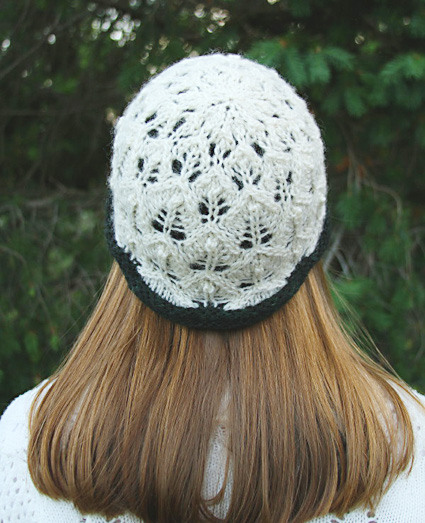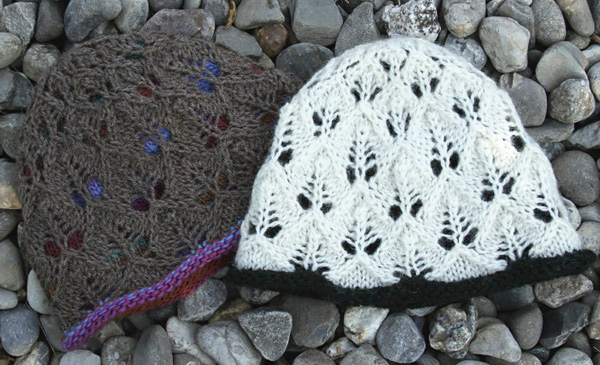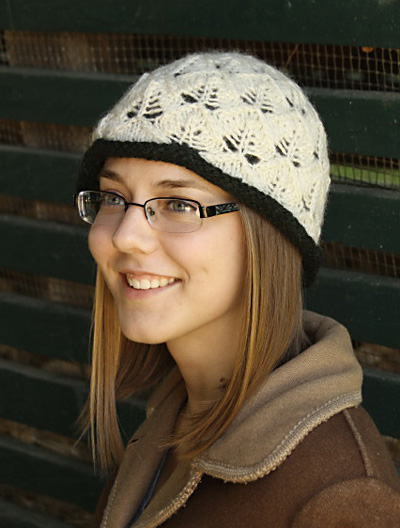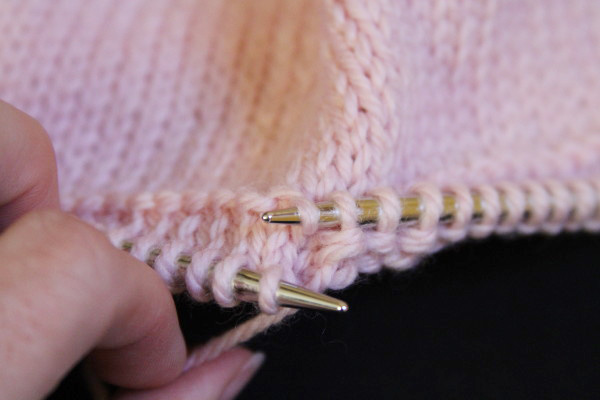

|
|
|

Our flock of Coopworth sheep produces the most wonderful fleeces, though I must admit to a bit of bias. Lustrous and silky, the roving is beautiful both natural and dyed, and offers an ease of spinning that makes Coopworth an excellent choice for a beginner spinner or spindler. The resulting yarn is durable and wears well, though some don't find it preferable for next-to-the-skin wear. The fleeces of many breeds have this same quality, which poses a challenge when trying to find a use for a few ounces of handspun yarn. A letter published in the May 1843 issue of The Magazine of Domestic Economy and Family Review presented a solution. The anonymous writer was responding to a plea in the April 1843 edition of the magazine from correspondent "Eliza," who was in search of a pattern for a gentleman's nightcap. The pattern started at the top of the nightcap with a few stitches, which were then increased to the diameter of the cap. The cap was to be knit until it was "a sufficient length, say 24 to 28 inches" then decreased to match the other end and folded inside itself to produce a toasty double thickness. Duplice is constructed slightly differently, so the smooth stockinette side of the background shows through the lace, but with the same basic idea of knitting two layers in one long tube. Using this technique, the inside of the hat can be a soft merino or acrylic, or even a cashmere to really pamper since only a small skein is required, with the handspun displayed on the outer layer. The lace highlights the handspun yarn, especially when contrasted with a dark or brightly patterned base yarn. The Bleeding Hearts lace pattern from Barbara Walker's A Third Treasury of Knitting Patterns was chosen because it reminded me of snow on the majestic pines of a neighboring farm, my original inspiration for this design. |
||
|
|
Tweet

|
|
|
SIZE |
|
|
FINISHED MEASUREMENTS |
|
MATERIALS
Commercial Yarn Alternative
Tools |
|||||
|
GAUGE |
MC: CC: |
|
PATTERN NOTES |
|

Hat starts at the top, with a small number of stitches. Use DPNs, magic loop or two circulars for this, but as soon as you are able, change to the 16-inch circular needle, as it makes it easier to work the pattern stitch. Sk2po: sl1 knitwise, k2tog, pass slipped st over st just knit.
Decrease Pattern |
|
DIRECTIONS 
Set up row: Knit. Distribute sts across needles as you prefer and join for working in the round, being careful not to twist. Mark start of round with a removable stitch marker in the fabric. Round 1: Kfb 3 times, k1. 7 sts. Purl 3 rounds. 

Continue, purling together turning row and stitches on needle, to end of round. Switch to CC. Weave in ends of MC and attachment of CC. This must be done before decreases for outer layer are started. Work Crown Decrease pattern. 7 sts rem. Cut yarn and thread through remaining seven stitches using tapestry needle. Bring end down through center of crown and weave in. |
|
FINISHING Block flat, stretching out lace pattern. |
| ABOUT THE DESIGNER |
|
|
|
Pattern & images © 2014 Kristine Byrnes. Contact Kris |